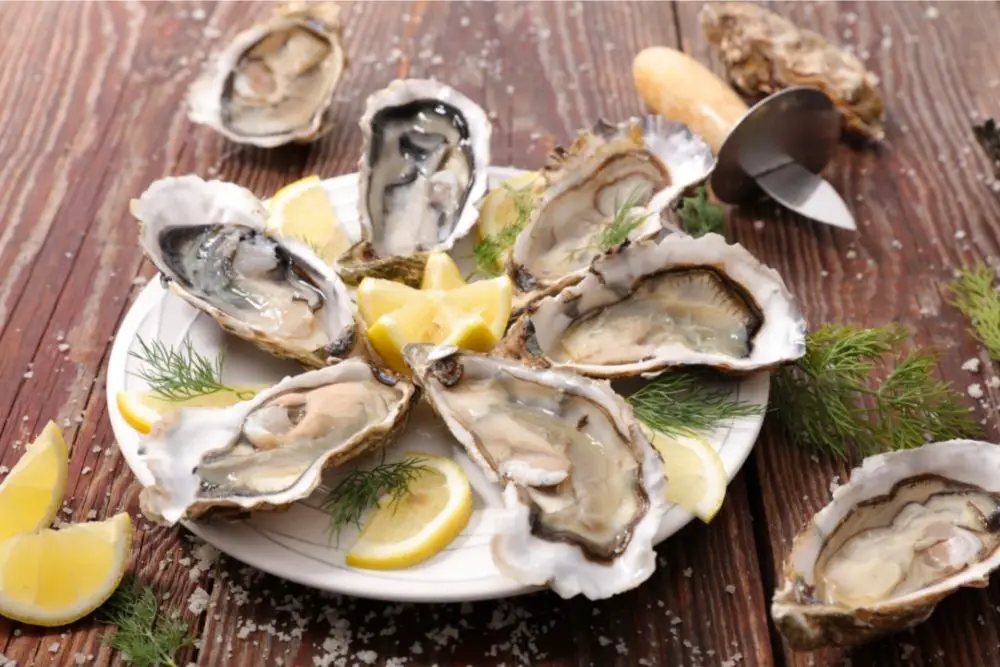Disclosure: Thank you for reading our articles! Some links may be affiliate links. We may get paid if you buy something or take an action after clicking one of these links. Additionally, as an Amazon Associate, I earn from qualifying purchases.
Oysters are often considered by seafood enthusiasts as jewels of the sea. When it comes to eating a freshly shucked oyster, there’s truly no better experience.
Oysters may be housed in rough hard shells, but the creature itself is as light and delicate as a feather. Simply put, oysters are delicious and there’s a reason why they are considered such a delicacy around the world.

However, we understand that there are some people who look at oysters and cringe away in fear. And it’s understandable, although oysters are delicious they’re not particularly attractive to look at.
Oysters are also surrounded by misinformation, with many people not understanding their significance in the world of gourmet dining.
This is why we have decided to answer some of the world’s most burning oyster questions. So that we may provide you with the answers and information you seek regarding these fruits of the ocean.
Are oysters still alive when you eat them raw?
The keyword in this question is the word “raw” which in general terms means “uncooked”. Although this does not mean that all uncooked food is alive (raw steak for example), in the case of oysters it does.
Yes, when you eat an oyster raw it is still very much alive. Or at least it has only recently died.
Now before you retch away from your computer screen in disgust, there is a reason oysters have to be served alive.
Oysters are traditionally served immediately after their shell has been cut open. They are served this way because a freshly opened oyster means that they are alive, yes, but also safe for consumption.
You see, oysters (alive or dead) are filled with bacteria called vibrio, which they naturally acquire from the coastal waters where they are grown.
Ingesting vibrio can lead to a condition known as vibriosis, which often takes the form of vomiting and diarrhoea.
But don’t worry, the chances of catching vibriosis from an oyster are extremely low. And the risk is reduced even more when the oyster being consumed is still technically alive.
Eating live oysters is also recommended by seafood experts because it is the only surefire way of getting the full oyster experience.
Freshly served oysters have a smooth and distinct flavour, which can be lost when dining on oysters that have suffered prolonged exposure to the elements.
So the next time you consider eating an oyster raw, remember that they are alive, but that it is safer to eat them that way for both you and your body.
Are oysters alive when served?
The answer to this particular question relies primarily on what kind of oysters you have ordered at the restaurant.
Different oyster dishes are served in different ways, and the condition of the oyster will also change depending on what you have asked for.
For example, if you are sitting in a glitzy restaurant and the waiter brings over a tray of ice chippings, with oysters nestled among the crystals. Then these are the “fresh” or “live” oysters that we have been previously discussing.
This particular oyster dish will also most likely come with the addition of lemon wedges and mignonette sauce.
These garnishes are particularly popular with raw oysters, as they help to heighten the already decadent flavour of the shellfish.
Although many seafood lovers would argue that oysters do not need so many trimmings, lemon is considered a must-have when enjoying a plate of the exquisite molluscs.
Beyond this, any other oyster dish you may order will most likely feature cooked oysters as part of the recipe.
This can include anything from grilled oysters to oysters baked with a herb crumb. When being served these particular dishes, you can enjoy your food knowing that the oyster is cooked and therefore dead.
Although oysters are often favored being served raw, health experts would instead have you enjoy cooked oysters as an alternative.
With cooked oysters, there is little to no risk of contracting vibriosis due to the bacteria being killed during cooking. However, the way you wish to enjoy your oysters is completely up to you.
How long do oysters live after shucking?
When an oyster’s shell is opened up, the process is known as shucking. Shucking involves placing a blade between the hinge of the oyster’s shell, then opening it before severing the abductor muscle which holds the shell closed.
Once this process is complete, the live oyster is exposed to the elements and therefore susceptible to deterioration.
Once an oyster has been shucked, it is expected to have a shelf life of between 5-7 days. But this is only if it is stored correctly, which involves keeping the shucked oyster on ice until ready to be eaten or cooked.
During this time the oyster will still be alive and ready to be served. However, once the 7 days are over the oyster will begin to die and this will heighten the possibility of ingesting harmful bacteria if eaten.
When it comes to purchasing oysters for your own consumption at home, it is highly advised that you purchase the shellfish unopened.
We advise this because unshucked oysters have a longer shelf life expectancy than oysters that have had their shells opened.
Of course, when you purchase unshucked oysters, you are purchasing oysters that are still alive and so they need to be stored correctly if you want them to last as long as possible.
This will involve storing the oysters in a cold and icy environment, which will allow them to stay alive and edible for up to 4 weeks.
However, we do also advise that you eat your purchased oysters as quickly as possible.
This is because an oyster’s flavour will begin to weaken and grow unpleasant the more it is allowed to age. So make sure to enjoy them as soon as you can.
